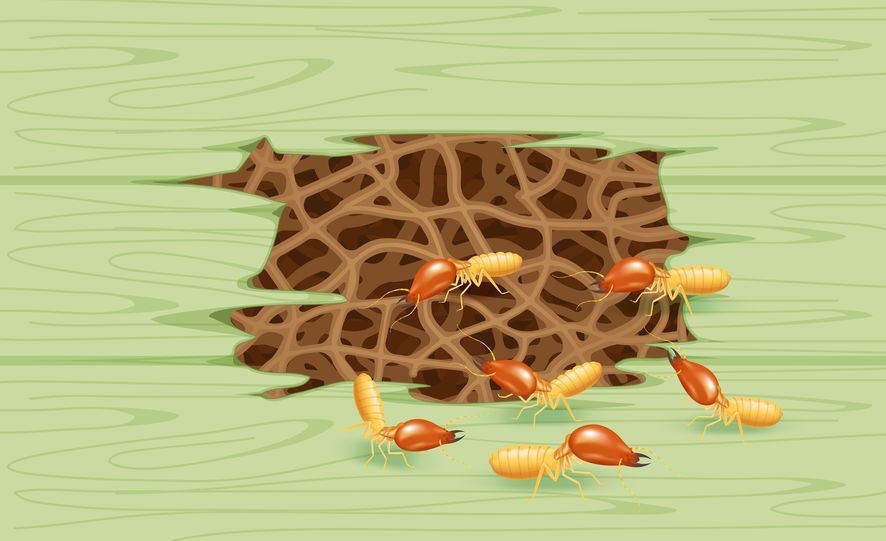Termites can damage a lot of wooden structures and objects around the home, but did you know that they can even damage the ceiling if it is made of wood? Even subterranean termites, which will infest the home from the ground up, can eventually reach the ceiling.
However, it can take a long time before any outward signs become visible on any piece of infested wood. This is because termites will focus on the core of the wood first and then consume towards the edges. By the time this becomes visible, the wood is likely heavily damaged. When the damage is extensive enough, the ceiling will start to sag and look water damaged.
Species that can infest the ceiling
We’ve mentioned one of the species that can infest the ceiling – subterranean termites. These termites will make their way up from the ground, where they build their colonies, into the ceiling. This means that by the time you notice the damage in the ceiling, a lot of the wooden support beams that lead up to it are also damaged.
The other species that is quite common in ceiling infestations are the drywood termites. These termites will build their colonies inside the wood they consume, and they infest the home through swarmers or winged termites. A swarmer will find a suitable piece of wood, burrow inside and then start a nest which eventually grows into a colony. These termites can attack any part of the home, and if there are termites in your ceiling, it’s likely that they are the culprits.
Signs that you may notice early on
Luckily, termites will often leave certain signs of their presence, and these can help you notice the infestation before the damage becomes too great. Some of the signs include frass, which is the waste material of the colony and which looks like sawdust. If you start to notice this sawdust around the home, then there may be an infestation present.
Another sign is the presence of wings or flying termites in the home. A mature colony will release these flying termites in order to start new nests, but the flyers do not live very long, and they shed their wings.
However, the best way to make sure that your home is as safe from termite damage as it can be is to set up a regular inspection schedule with a pest control pro. Contact us today if you would like to know more about termite infestations, or if you require pest control services.

